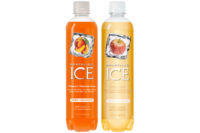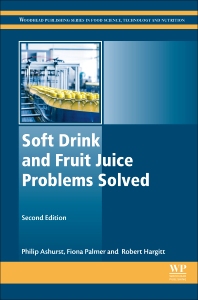Small-format pallets benefit distribution network
Half-sized pallets can support in-store display merchandising




The traditional methodology for the beverage distribution industry is to both store and deliver product on large-format pallets. With regard to order or delivery pallets, the variety of SKUs contained on a pallet was either built in a distribution center or created at the point of delivery. As reported in several articles, “beverage distributors are now addressing the unique needs of delivery drivers with a primary focus on safety, ergonomics and durability.” Increasing the utilization of small-format delivery pallets significantly reduces factors that negatively are impacting the distribution network.
The small-format pallet, sometimes referred to as a “half pallet,” allows beverage distributors to minimize the overall labor cost of getting product to retail, thereby enhancing profitability. Many companies in the beverage industry that already have gone to small-format delivery pallets for a significant portion of their routes are experiencing a reduction of delivery times, with a subsequent increase of stops each day.
Some of the thinking behind the small-format pallet is to be a more efficient alternative for retail merchandising such as display-ready pallets. Drivers can execute deliveries faster, better and more efficiently with lower risks of injuries.
By prebuilding the custom order pallet at the distribution warehouse, drivers can deliver the orders much more accurately as well, which not only increases delivery speed but also reduces product returns to the warehouse.
The benefits that distributors gain during the delivery of the goods often come at the expense of warehouse operations. Building complete order pallets in a distribution warehouse can take up a significant amount of space because of the fact that all SKUs need to be available at all times to fulfill order requirements.
This increases the complexity of order fulfillment preparation and penalizes the productivity of picking operations. For instance, products that previously might have been picked as a layer quantity could come from a source pallet and go directly to an order pallet now need to be picked on an individual case basis to be placed on a small-format pallet. Also, as SKU proliferation continues and package types evolve, what might work for one order fulfillment system might not for a different region or customer range. This becomes even more complex for some of the larger distribution networks operating multiple warehouses. Not only is an order fulfillment system required in multiple facilities, but inventory levels need to be replicated.
Innovation comes into play when distributors encounter these challenges. Companies providing solutions for mixed-SKU palletizing can improve client operational performance and accuracy using automation. With the introduction of additional pallet size varieties, equipment manufacturers need to take these factors into consideration during the system design. How to convey and handle all of the products within the same system in order to maintain the right level of flexibility and scalability of customer operational requirements is critical.
Qualified integration companies offer solutions that can automate picking and palletizing activities to build mixed-SKU pallets with the ability to handle all customer order profiles and pallet types, according to customer palletization rules and stackability criteria. Systems should be able to handle a large increase in SKU count or variation in packing types with little or no impact to the system performance and require no additional equipment.
Another key system design factor is the ability to maintain operations when order profiles change (i.e. – less layer quantities, a lower case count for each order line quantity, etc.). All facets of the order fulfillment need to be thoroughly investigated for the current operational requirements and what is being forecast for future requirements. Also, with the increasing trend of the small-format delivery pallets, it is important to identify the correct technology and qualified solution providers that are able to handle the multitude of existing pallet sizes and package types without having to invest in an equivalent multitude of technologies for the future.
With robotic solutions taking care of the described challenges, beverage distributors can reduce human labor utilization for simple picking tasks and improve picking accuracy while handling product with consistent care. This results in an overall improvement of operational productivity of both warehouse operations and customer deliveries with a reduced risk of additional costs associated with injuries.
The key factor that remains is meeting the requirements of the customer. By utilizing small-format pallets, the customers of the distributors will not see an impact, but the distributor will see significant improvements throughout the organization. If the warehouse operations that are supporting distribution implement a system with the highest flexibility to react to future change without any interruption, the entire supply chain benefits
Looking for a reprint of this article?
From high-res PDFs to custom plaques, order your copy today!








